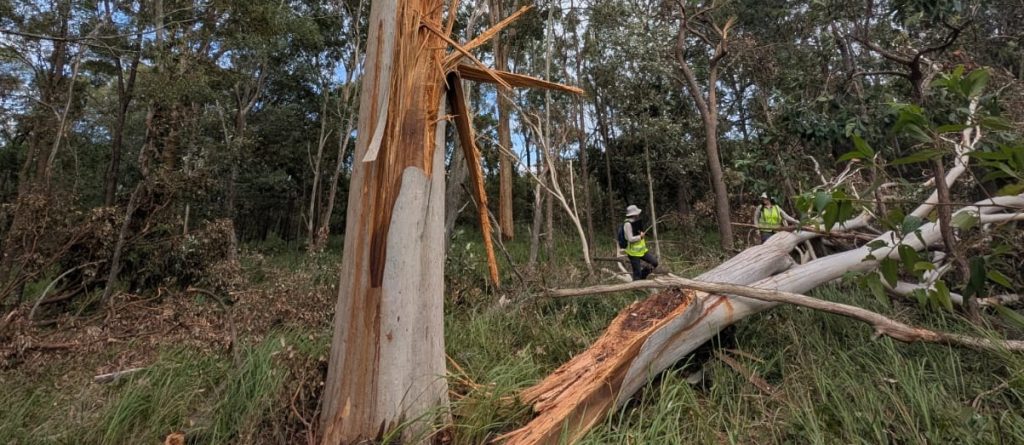MEDIA RELEASE: Issued Tuesday, 25th March 2025
Ex-Cyclone Alfred’s devastating impact on Southeast Queensland not only affected communities but also delivered a severe blow to the region’s vulnerable wildlife. As floodwaters receded and fallen trees were cleared, Endeavour Veterinary Ecology’s (EVE) specialised teams have been working tirelessly on the frontlines of wildlife recovery efforts, with koalas being among the most significantly impacted species.
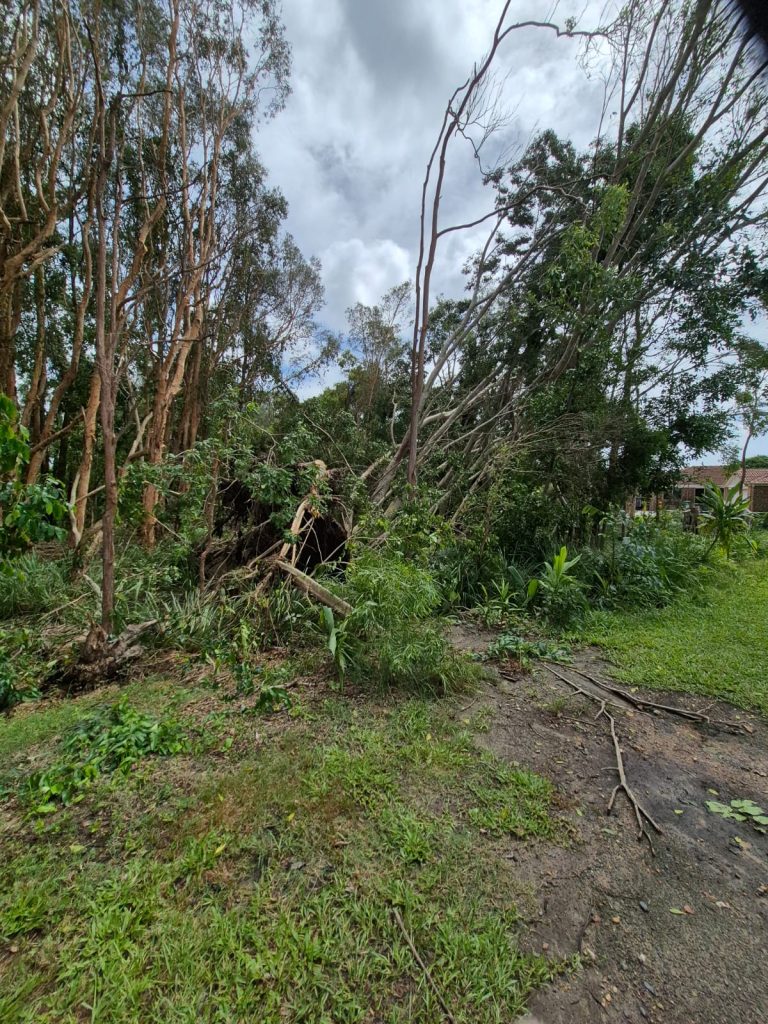
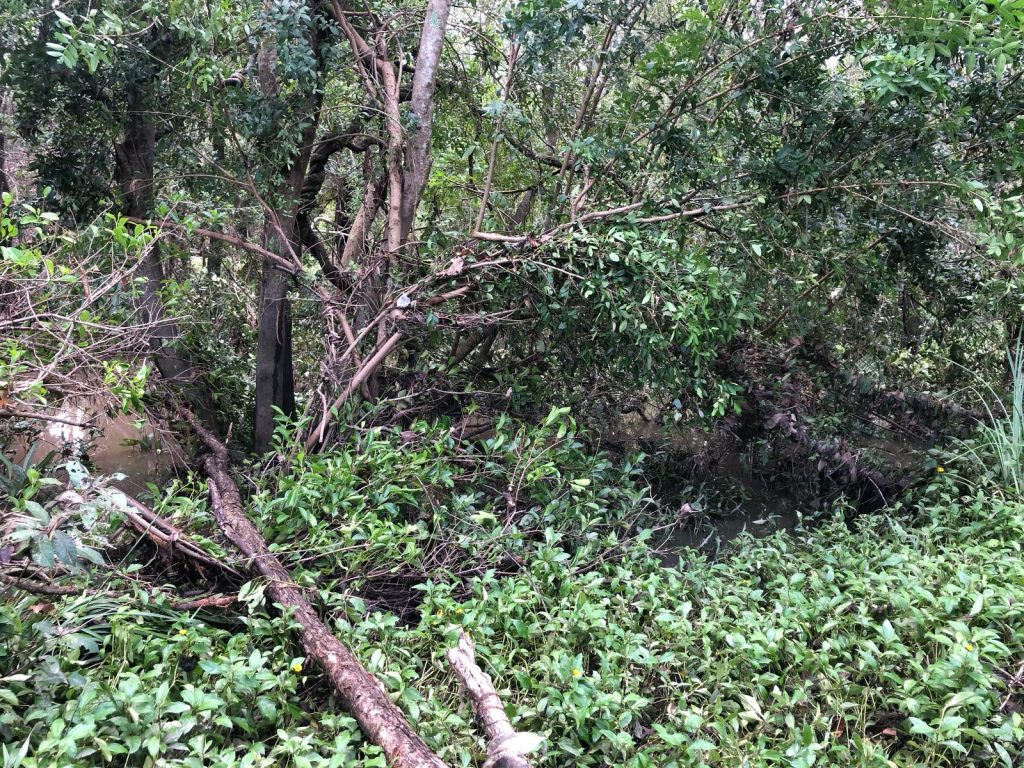
Recent public discussion has centred around Beckton, an urban koala photographed wearing a K-Tracker monitoring device in his Helensvale home range. His story illustrates the life-saving benefits of modern conservation technology when deployed by experienced professionals.
Beckton’s Journey: A Success Story of Proactive Monitoring
Beckton has been under EVE’s watchful care since he was a joey riding on his mother Eden’s back, when he weighed just 1.64kg. Now an independent koala, at 3.5 years of age, he navigates life in an urban environment where development has narrowed his home range.
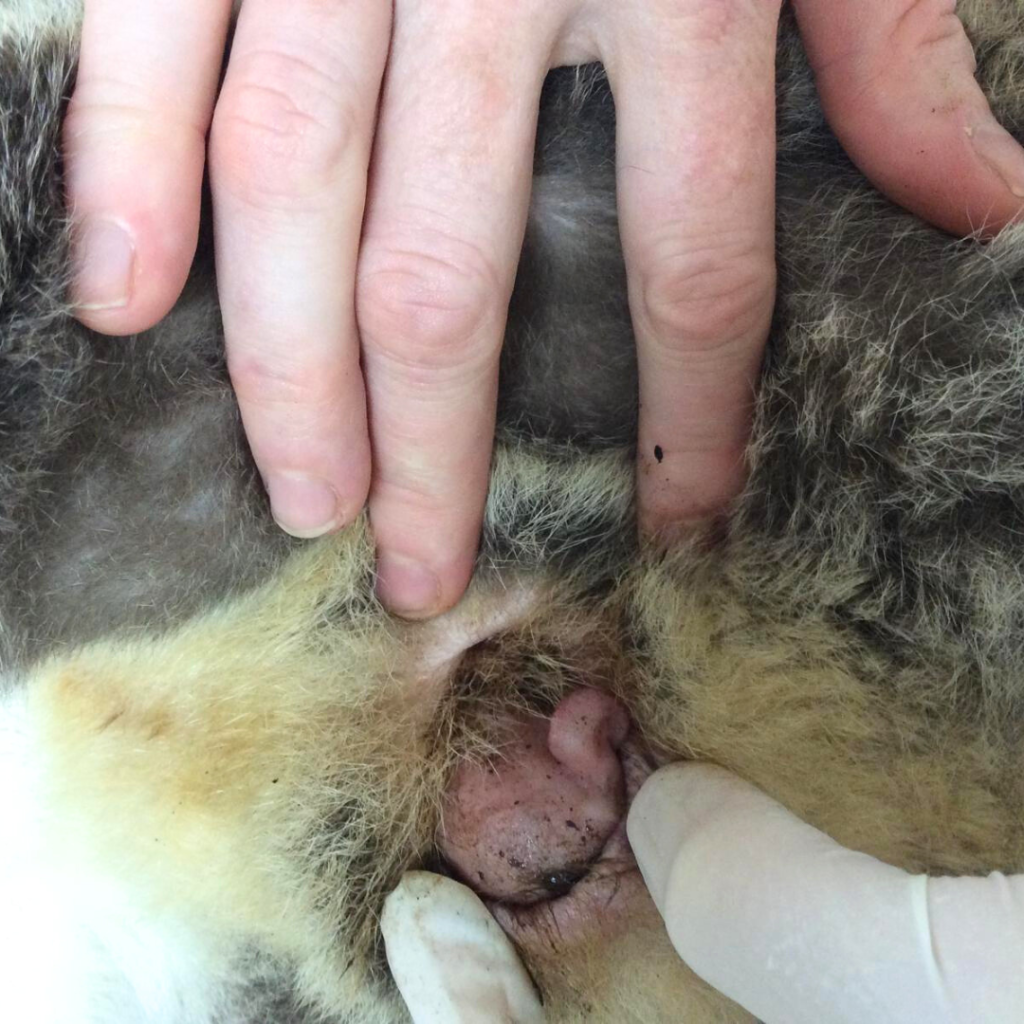
Beckton observed at a health examination as a ‘pinky’ in his mother Eden’s pouch in early 2022.
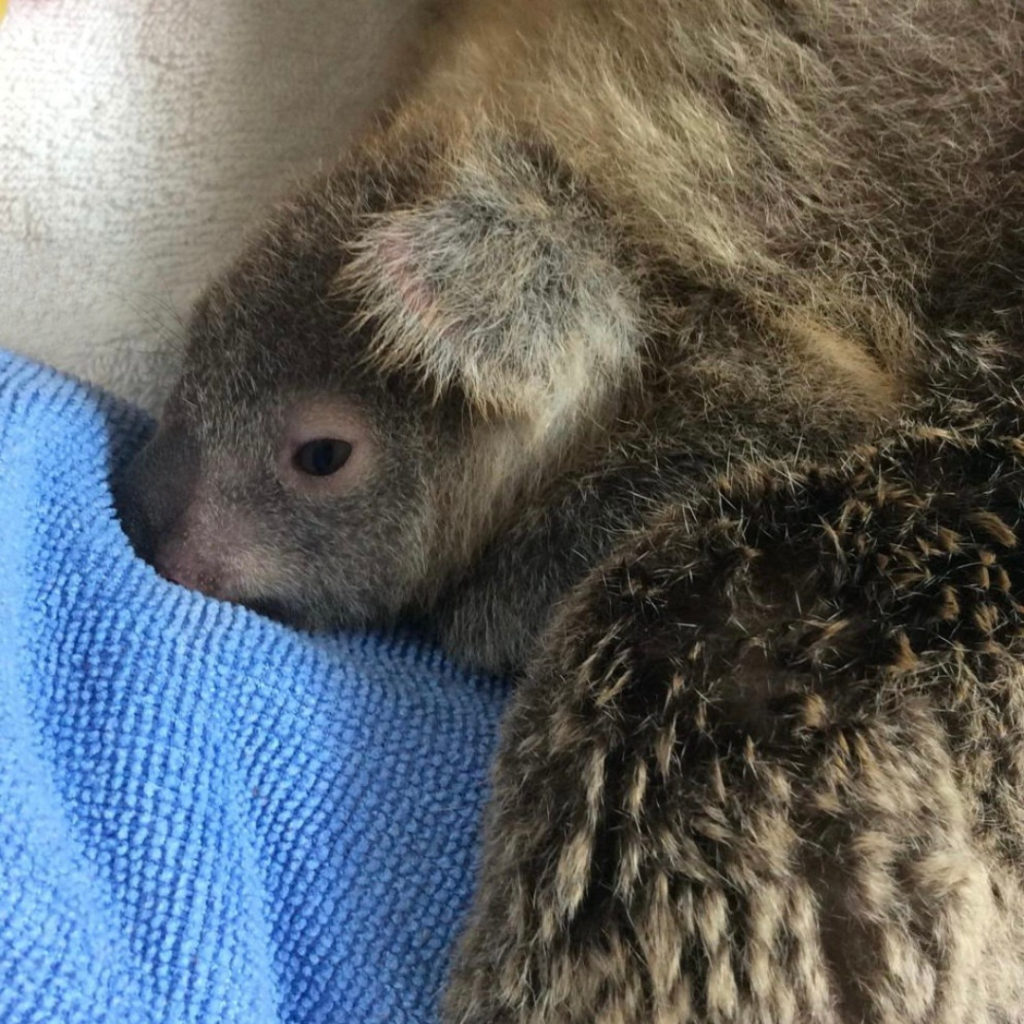
Beckton as a furred joey in May 2022 at a health exam conducted by Endeavour Veterinary Ecology.
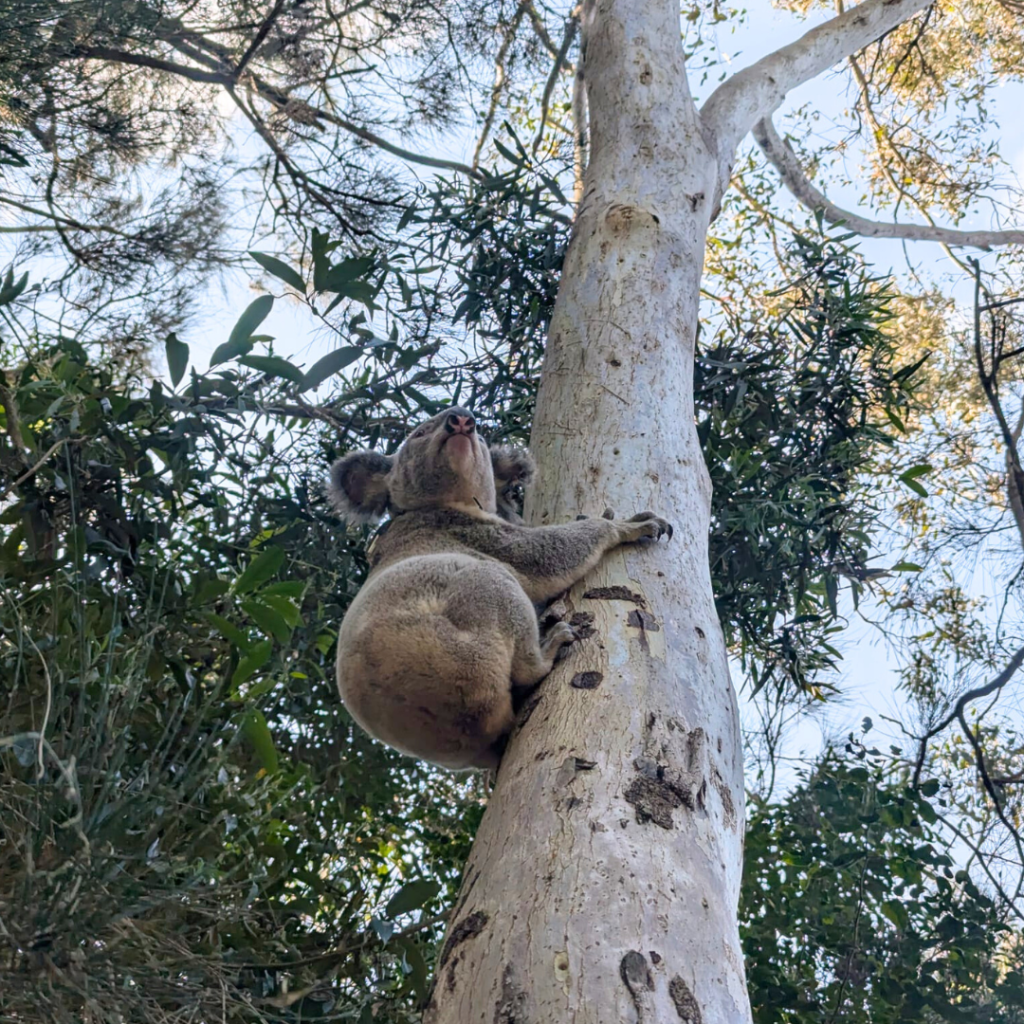
Beckton sighted by EVE’s field and monitoring team in August 2024.
Following Ex-Cyclone Alfred, EVE’s monitoring system detected concerning changes in Beckton’s activity patterns. On March 13th, a day after community members spotted him, the K-Tracker alerted our team to abnormally low activity readings. EVE’s field specialists, quickly located him for visual assessment and found him sitting low in a tree looking a bit flat.
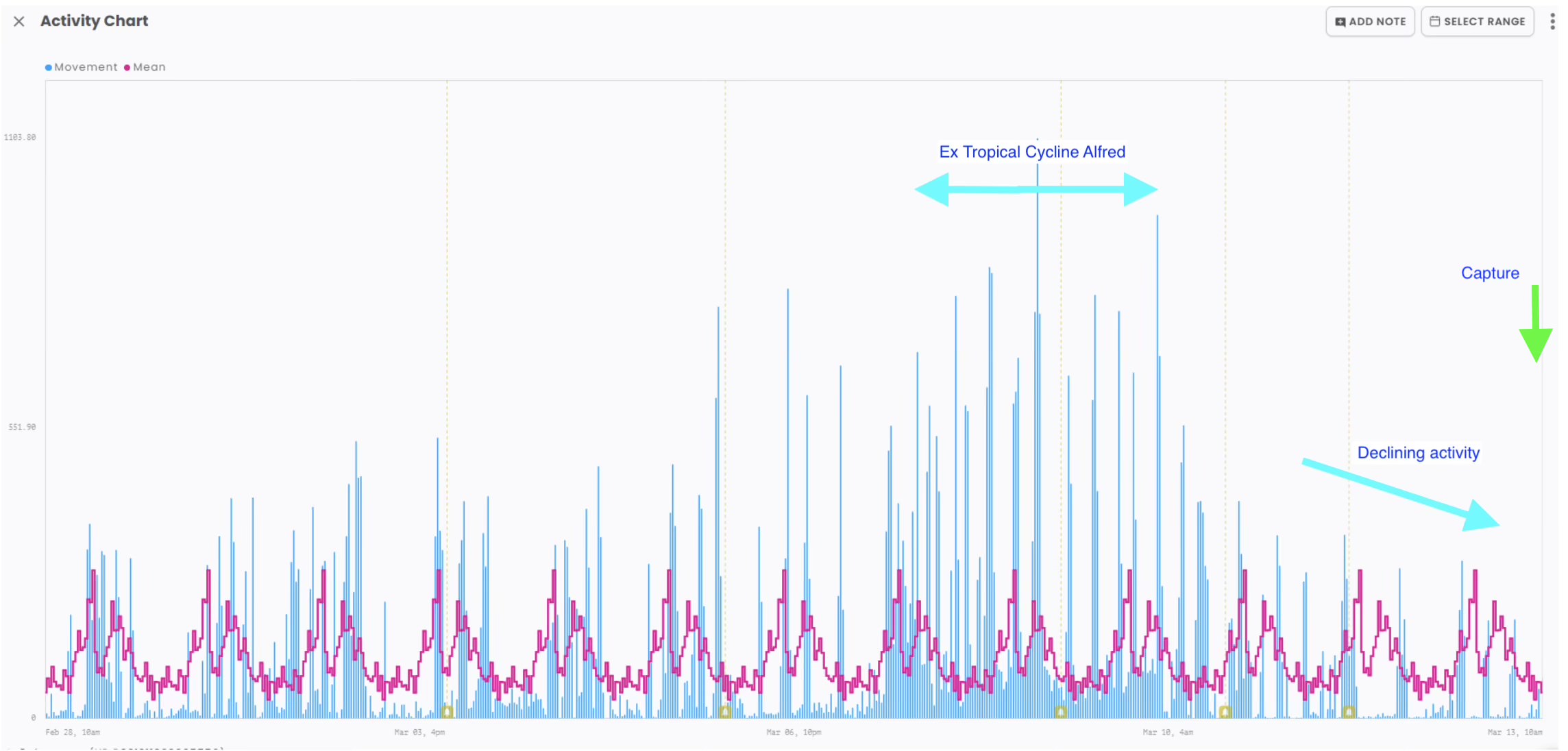
Upon examination, our team observed that Beckton had nasal discharge and ulceration – conditions likely resulting from the extreme weather event. Taking a precautionary approach, he was transported to EVE’s intensive care koala hospital in Toorbul.
“Without our monitoring technology, Beckton’s condition might have gone undetected until it became critical,” said Dr. Jon Hanger, founder of the K-Tracker system. “His case demonstrates how essential these tools are for timely intervention.”
Beckton tested negative for Bordetella (a potentially fatal bacterial infection) and is now receiving specialised care, including treatment for his nose ulcers. He will remain under professional veterinary supervision until he regains weight and his health stabilises, ensuring he can thrive when returned to his home at Helensvale.
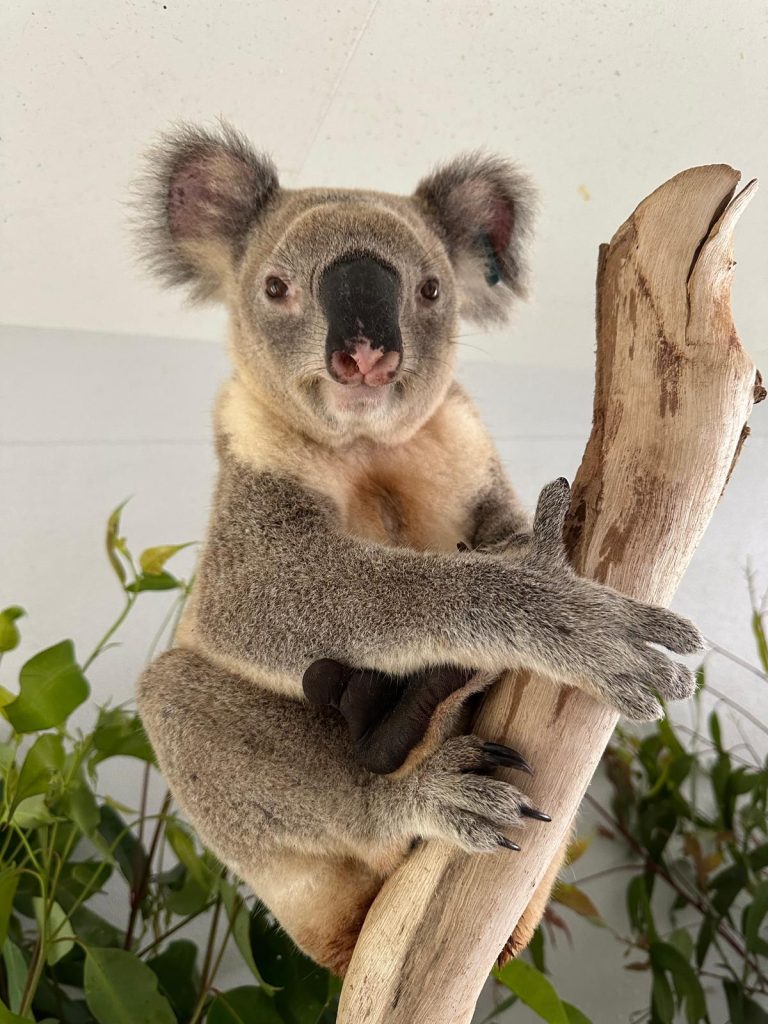
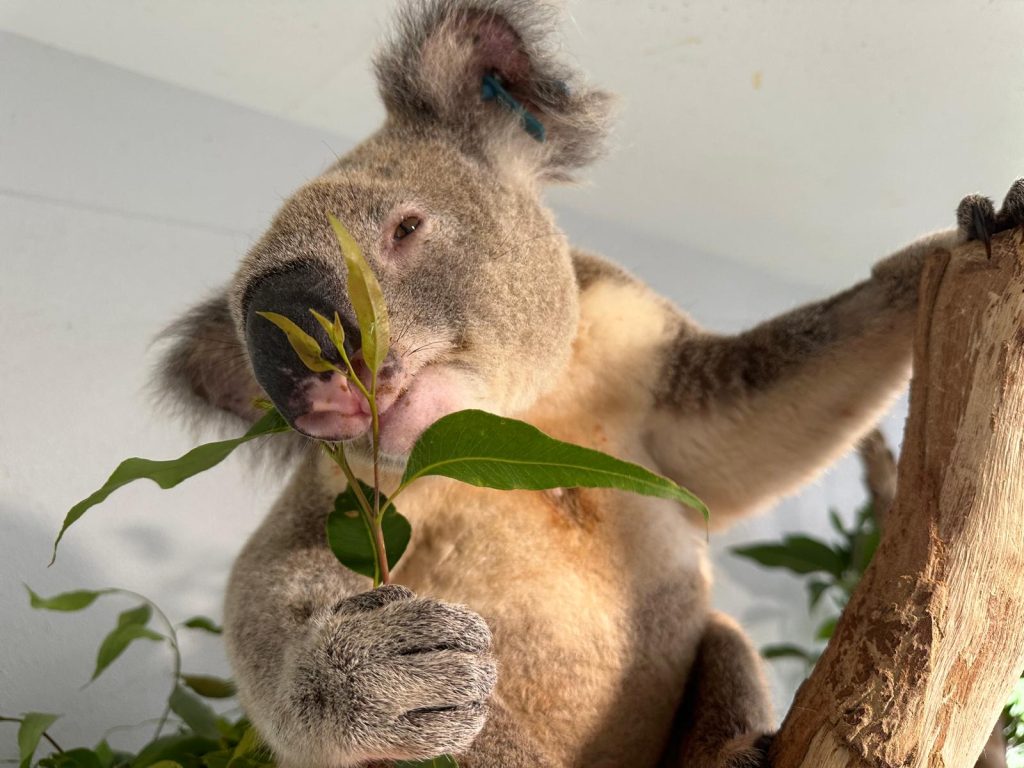
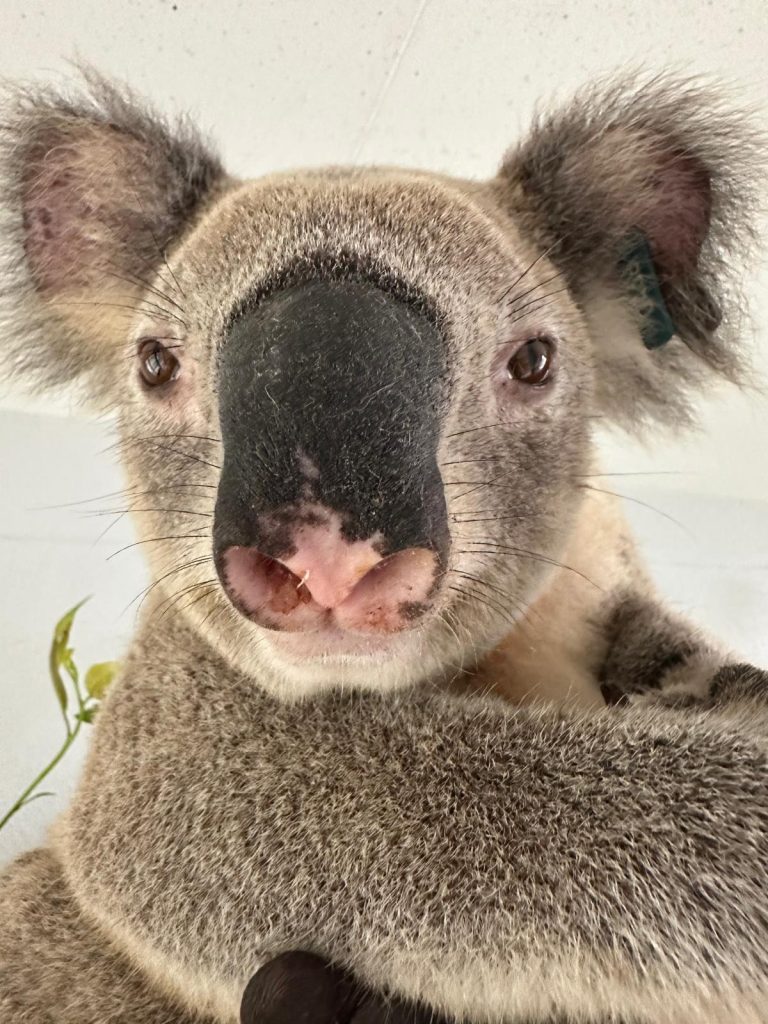
K-Tracker: Purpose-Built Technology for Koala Protection
The K-Tracker system represents cutting-edge conservation technology specifically designed for koalas. These GPS tracking devices are deployed as part of a comprehensive approach to protecting koalas in areas where development activities necessitate intensive monitoring. To put it simply, without this monitoring, koalas like Beckton would not survive.
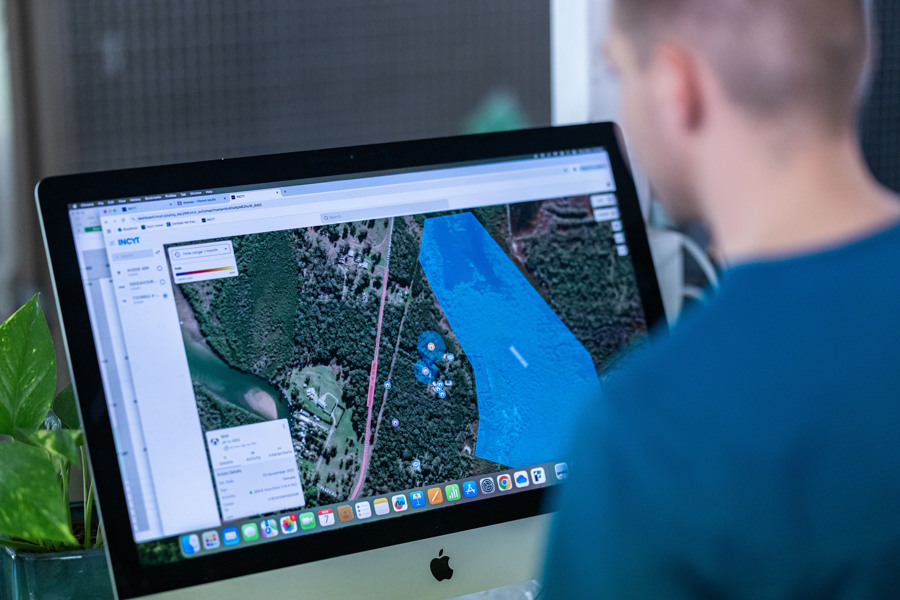
Research conducted by EVE demonstrates the critical importance of this technology. In a controlled study, experienced fauna spotters were only able to detect 23% (7 out of 30) of koalas in an area – meaning that without advanced monitoring, 77% of koalas might go undetected during clearing operations, putting them at severe risk.
This life-saving technology allows our team to:
- Provide rapid intervention when a koala shows signs of distress or illness
- Track movements during extreme weather events
- Protect koalas during necessary vegetation clearing
- Gather vital data to inform future conservation efforts
Misinformation Threatens Conservation Efforts
Dr. Jon Hanger, Director of Endeavour Veterinary Ecology, who developed the K-Tracker technology to safeguard approximately 500 koalas during the Moreton Bay Rail Project between 2013 and 2017 expressed concern about recent criticisms:
“While EVE is not responsible for habitat clearing or its approval, the backlash has been intense, with accusations of invasiveness and claims that we should simply leave the koalas alone. While we understand the passion behind these concerns, halting our monitoring efforts during vegetation clearing and construction works would not help koalas—it would only make their situation worse.”
“Deliberate misinformation on koala tracking and monitoring can diminish the enormous and collaborative efforts provided by stakeholders on these projects that go far beyond compliance in protecting at-risk koalas, and unfortunately promotes fear and divisiveness in our wildlife community. It also harms our team, who have been on the frontline of recovery efforts post ex-Cyclone Alfred and working exceptionally hard to provide care to many koalas, including dealing with the fatalities and injuries.”
President of Wildcare Australia Inc, Karen Scott, who rescues and rehabilitates koalas from across the footprint of the project area, emphasised the importance of collaborative conservation efforts:
“We need to work together. The work done by Endeavour Veterinary Ecology is vital to protect koalas that are impacted by vegetation clearing and habitat loss. If their work were to stop, the koalas living in the path of habitat destruction would be unmonitored, and preventable deaths would occur. The risk of koalas being harmed during clearing operations increases dramatically without the safety net of monitoring and management efforts. Additionally, koalas that are suffering from diseases like chlamydiosis would not be found in time to receive treatment, and their suffering would continue. Although we can’t support a project that is destroying koala habitat, we applaud Queensland TMR for implementing a best-practice comprehensive koala monitoring program. Without the monitoring and care provided by EVE, koalas like Beckton might have died, and for the population as a whole, the problem becomes even worse.”
For more information about the work we do, we have prepared some Frequently Asked Questions about our major koala tagging and health programs. Click here to view.

